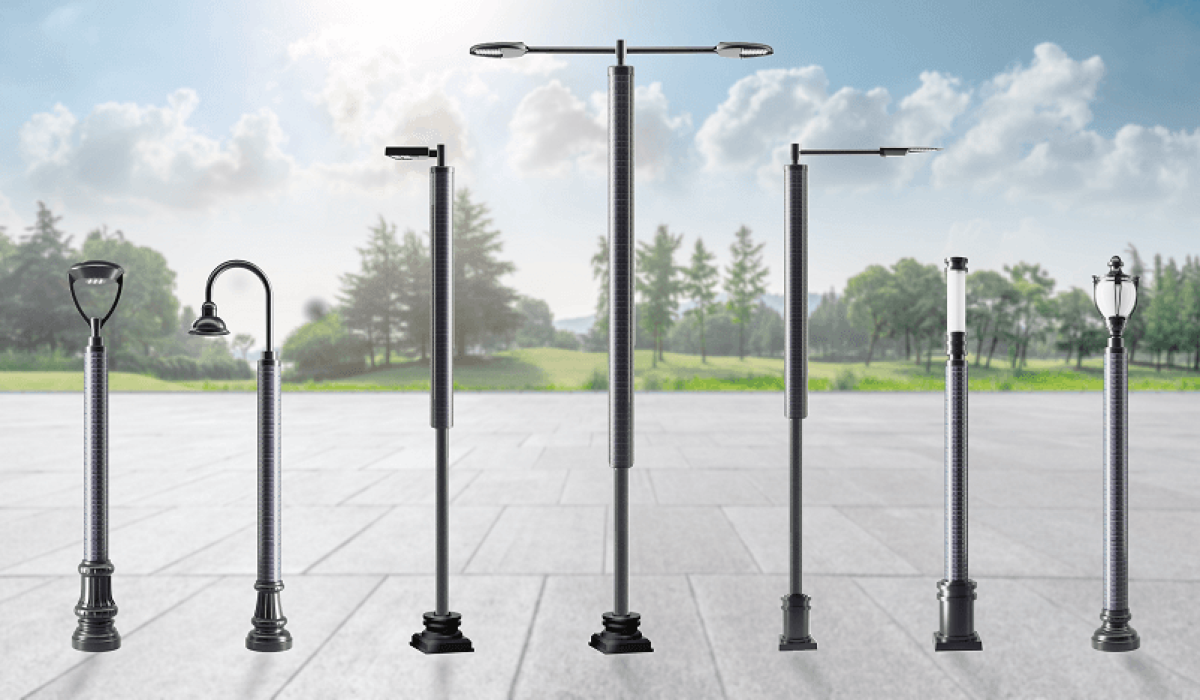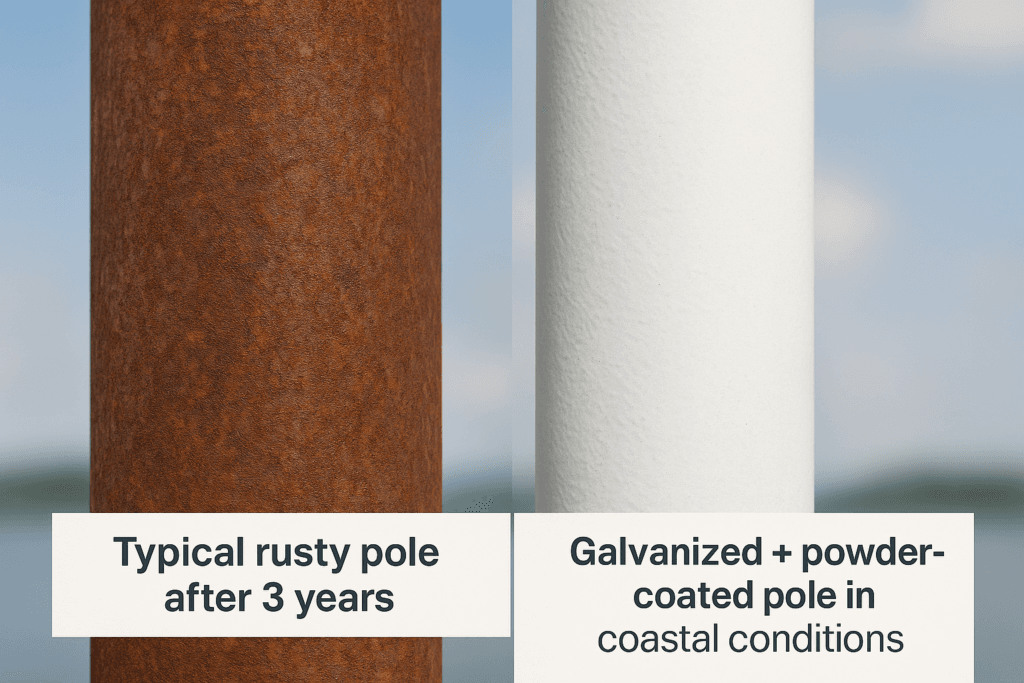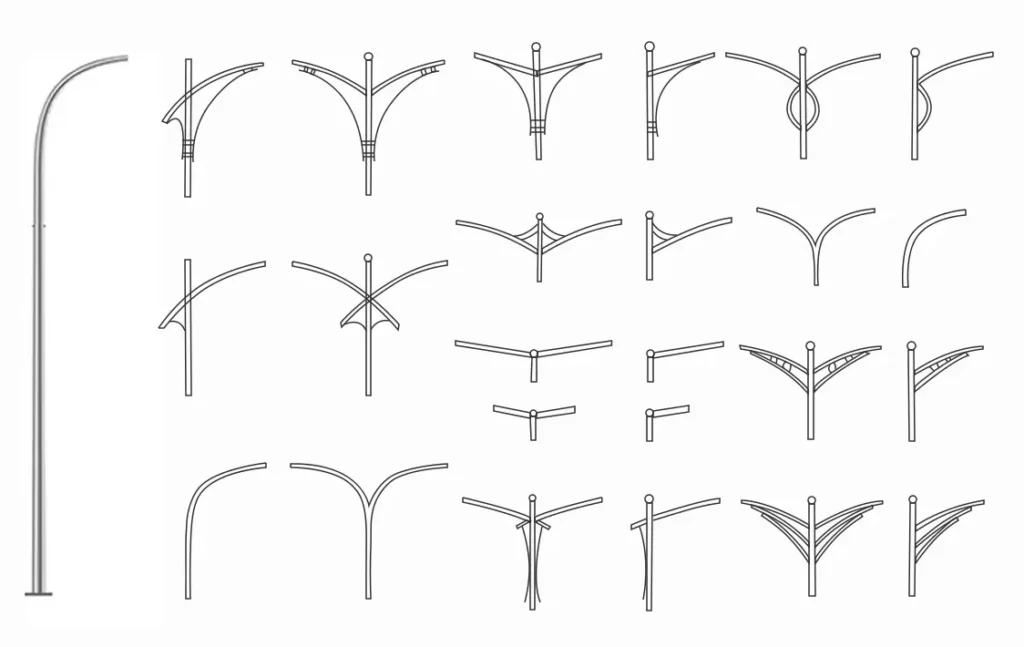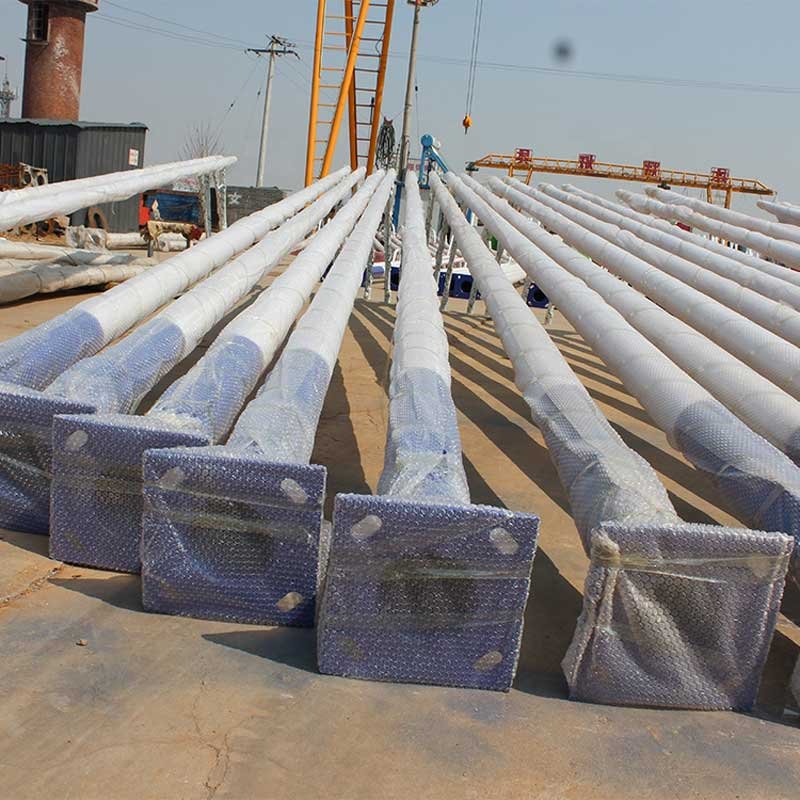Choosing a light pole isn't just about looks—it's a critical decision that affects structural safety, installation complexity, and long-term cost. In our field work, we’ve seen firsthand how material choice can significantly impact performance and maintenance budgets over time.
Steel poles offer greater structural strength and load-bearing capacity. Aluminum poles excel in corrosion resistance and require less maintenance. The right choice depends on site-specific conditions and project priorities.
Strength & Load Capacity: Which Material Performs Better?
Before selecting a material, consider what each pole needs to support—such as luminaires, security cameras, banners, or solar panels. These determine your required load capacity.
-
Steel Poles
Known for their superior rigidity and strength, steel poles perform reliably under high wind loads and when carrying multiple attachments. They're common on highways, in industrial zones, and large municipal settings. -
Aluminum Poles
Lightweight and easy to handle, aluminum poles are better suited for decorative, residential, or pedestrian-scale installations. However, they aren’t ideal when structural demand is high.
For areas with strong winds or heavy fixtures, steel poles provide better long-term performance and stability.
Weather Resistance & Corrosion Protection
Environmental factors like moisture, salt spray, and acid rain accelerate material degradation. Matching pole material to climate conditions is essential.
-
Steel Poles
Require galvanizing, painting, or powder-coating to prevent rust. Coatings degrade over time, especially in coastal or humid areas, requiring scheduled maintenance. -
Aluminum Poles
Naturally corrosion-resistant, especially in marine or tropical zones. Minimal surface treatment is needed, making them a better fit for harsh climates.
In wet or salt-heavy environments, aluminum poles offer a clear advantage in durability.
Installation & Foundation Compatibility
Material flexibility during installation can significantly impact project timelines—especially for retrofits.
-
Steel Poles
Easily adapted to existing foundations. Welded base plates can match legacy bolt layouts, making them ideal for upgrades or irregular sites. -
Aluminum Poles
Typically come with fixed cast bases and standard bolt patterns. They’re less forgiving when working with pre-existing anchor setups.
For retrofit or replacement scenarios, steel poles provide more installation flexibility.
Aesthetics & Maintenance Requirements
Visual longevity matters in public-facing environments such as parks, city centers, and campuses.
-
Steel Poles
Coated finishes may chip, fade, or rust over time. Periodic repainting or touch-ups are needed to maintain appearance—especially in aggressive environments. -
Aluminum Poles
Develop a self-protecting oxide layer that resists surface deterioration. Repainting is rarely required, unless a specific color or decorative finish is desired.
For projects where visual integrity and low maintenance are priorities, aluminum is often the better choice.
Cost Comparison: Initial Investment vs. Lifecycle Value
| Factor | Steel Pole | Aluminum Pole |
|---|---|---|
| Initial Material Cost | Lower | Higher |
| Corrosion Protection | Needs regular coating maintenance | Minimal upkeep required |
| Installation Labor | Heavier—requires lifting equipment | Lightweight—easier manual installation |
| Lifespan in Coastal Climates | Shorter if coating fails | Longer thanks to natural resistance |
| Sustainability & Recycling | More coating waste, lower recyclability | Fully recyclable, smaller carbon footprint |
While aluminum poles cost more upfront, their extended lifespan and reduced maintenance often result in lower total ownership costs.
Field Example: Coastal Retrofit Project in Southern China
In 2022, we supported a municipal project in a coastal city frequently affected by typhoons and salt-laden air. Phase one used steel poles—visible rust appeared within 12 months. In phase two, the city switched to aluminum. The initial material cost increased by 18%, but five-year maintenance expenses dropped by over 40%.
Officials also noted fewer public complaints and a cleaner streetscape due to better visual retention of the aluminum poles. This project demonstrated how material decisions directly influence long-term performance and return on investment.
Final Recommendation: Match Material to Site Conditions
Choose Steel Poles if:
- Your lighting system supports multiple heavy attachments (solar, cameras, signage)
- You need compatibility with existing anchor bolt layouts
- The environment is inland, dry, or budget-constrained
Choose Aluminum Poles if:
- You’re installing in coastal, humid, or rainy areas
- You want a lower-maintenance solution with longer visual integrity
- The project prioritizes sustainability and long-term lifecycle cost





